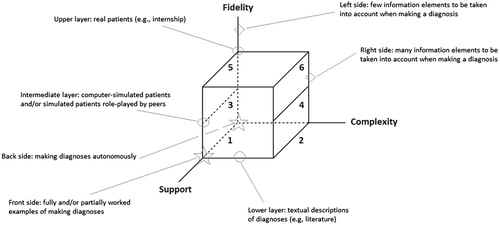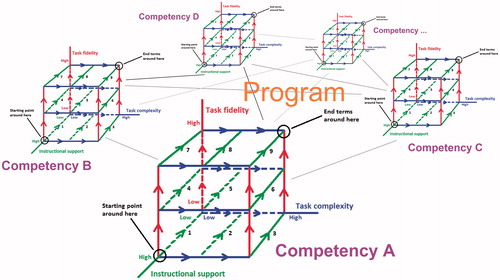Figures & data
Figure 1. A holistic model for how to integrate a competency into a medical curriculum (Leppink & Van den Heuvel Citation2015) applied to learning how to make a (particular type of) diagnosis: (1) simple textual diagnoses with and then without instructional support; (2) more complex textual diagnoses with and then without instructional support; (3) simple diagnoses in a simulated environment with and without instructional support; (4) more complex diagnoses in a simulated environment with and without instructional support; (5) simple diagnoses in a real patient environment; and (6) more complex diagnoses in a real patient environment.

Figure 2. Medical competencies and topics as paralleled cubes (Leppink & Van den Heuvel Citation2015) in a coherent program.

